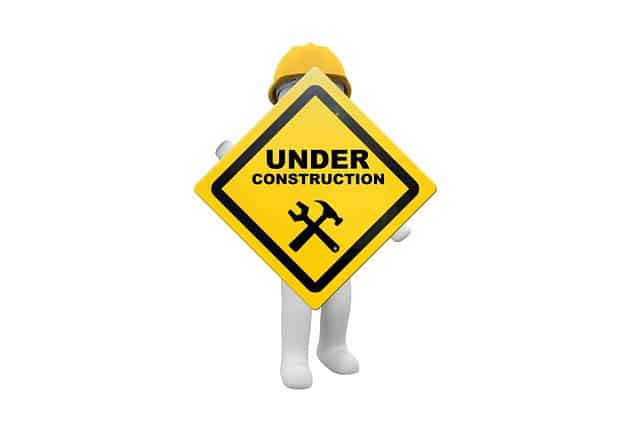Orthodontists specialize in correcting misaligned teeth, commonly using braces as a tool to straighten teeth, particularly amongst younger patients. In addition to cosmetic benefits, treatment can prevent a variety of issues that may plague those with misaligned teeth. Issues including bad breath, pain and discomfort, speech impediments, gum disease, and tooth decay, are amongst many other possible ailments.
Maintenance and Care
Should your child have a need to address misaligned teeth, they will endure a somewhat lengthy process. Parental guidance and supervision will be useful. Parents can play a significant role in ensuring optimal oral health and hygiene by aiding their child in maintenance and care.
Maintain a Proper Diet
- Help your child adhere to a diet consisting of foods that are safe and tooth friendly. Consider limiting highly acidic foods, like citrus fruit and soft drinks, which can gradually wear down sensitive tooth enamel. Foods like bananas, carrots, dairy, and eggs are all low in acidity, which is ideal for teeth.
- Avoid foods that could potentially damage or get stuck, like hard nuts and sticky candies. Additionally, children should avoid excessive consumption of sugar. Teeth become more susceptible to tooth decay and cavities during the process.
Follow a Routine
- Encourage your child to follow a diligent oral hygiene routine throughout the entire process. This includes removing elastic bands prior to brushing and ensuring that hard to reach places are cleaned, like areas located behind and between your child’s teeth.
Don’t Forget to Floss
- It is important that your child continues or begins flossing. While flossing may be more difficult, it is arguably more important than ever before, as teeth become even more prone to trapped food particles. Flossing at least once per day is recommended.
- Though it can be beneficial to do so more than once per day. Should your child have difficulty flossing, your orthodontist may be able to provide advice and/or potential solutions to make it easier.
Be Gentle
- Using a soft toothbrush or electric toothbrush will ensure that the increased frequency of oral care required during treatment does not cause excessive wear of the sensitive enamel on your child’s teeth.
Practice Diligence
- Though it may initially be a bit tedious, you should really emphasize the importance of a diligent and thorough oral hygiene routine. Practicing a good oral hygiene routine may prove to be challenging for children with limited patience or attention. Patience may be necessary. Suggest that your child focuses on cleaning one tooth at a time until they have gone over all of their teeth.
- Spending a short amount of time cleaning each individual tooth will ensure that no areas are missed, which is easy to do. Don’t forget to have your child reach their tongue and gum lines when brushing. Harmful bacteria can also reside in these often forgotten areas of the mouth.
Make Use of Mouthwash
- Mouthwash can be particularly useful for eliminating the harmful bacteria that can accumulate and can serve as an additional mechanism for removing various food particles that may have been missed during brushing and flossing. It is highly recommended that mouthwash is used as part of your child’s oral care routine.
Increase Frequency
- During the process, your child’s mouth becomes particularly susceptible to harmful plaque and bacteria, as food particles become easily trapped in the many cracks and crevices. As a result, it is suggested that children increase the frequency of oral hygiene during this time.
- Ideally, it is best for your child to brush their teeth after any food consumption. When unable to brush after eating, rinsing one’s mouth out with water can still prove to be beneficial in eliminating left behind good particles.
Stay Well Prepared
- Investing in one or more travel toothbrushes may be helpful for your child, ensuring that they are well prepared for practicing good oral hygiene even when they are not at home. Have your child keep a travel toothbrush in their backpack, which will prove to be handy for use following school time snacks and lunch.
- If necessary, you may wish to discuss your child’s need for an increased oral hygiene regimen with their teacher, so they are permitted to have the additional time that they may need.
Get Specialized
- There are a number of different products that can be particularly useful for care and maintenance. Some products are made specifically for those with braces. Specialized tools can make the entire process of cleaning significantly more effective and convenient. This increases the likelihood that your child will follow through with necessary cleaning tasks. One tool available is the interproximal brush. This brush is cone-shaped, making it easier to access hard to reach places compared to when using a standard toothbrush.
- Floss threaders are another tool that may be helpful for flossing, as an alternative to using only traditional dental floss. Floss threaders are specifically designed to enable easier flossing and can be found at most pharmacies and supermarkets.
Time Scale
- On average, the entire process will take place over a period of 18 to 30 months. Thus presenting a significant period of time for excess plaque and bacteria to accumulate and wreak havoc on your child’s oral health. Appropriate care and maintenance can require a significant amount of time and energy, which many children will be unlikely to take on by themselves.
- Therefore, it is of utmost importance that parents play an active role in encouraging and supervising a diligent oral hygiene routine throughout the full duration of the process. Doing so will ensure that your child’s treatment is effective. This will minimize potential sources of discomfort that may occur in the absence of a suitable routine.
Maintenance
- Proper maintenance is critical for achieving successful teeth realignment. Failure to comply with maintenance requirements can result in damage that may prevent achievement of desired results. Ineffectiveness as a result of poor care can result in additional oral health problems.
- Tooth decay and cavities, creating a need for further costly dental work are examples. In order to maximize the effectiveness and minimize the duration of treatment, proper care and maintenance is key.
A Reputable Orthodontist
Finally, it is important that you work with an experienced and reputable orthodontist that will be able to provide you guidance through the orthodontic process. Be sure to make use of the many sources of information available on braces maintenance. In addition, make sure to follow the information that is provided by your child’s orthodontist. Be an active participant in your child’s orthodontic care.
Thus you will be able to ensure that your child closely follows directions for braces maintenance with the result being a positive outcome that will yield the many benefits of having properly aligned teeth. Schedule an appointment with Nease and Higginbotham Orthodontics and put your child on the right track for a healthy, perfectly aligned smile.
Nease and Higginbotham Orthodontics
2455 E. Main Street
Spartanburg
SC 29307
Phone: (864) 579-7700
Are you Struggling with Maintenance of Your Braces | 11 Hacks





